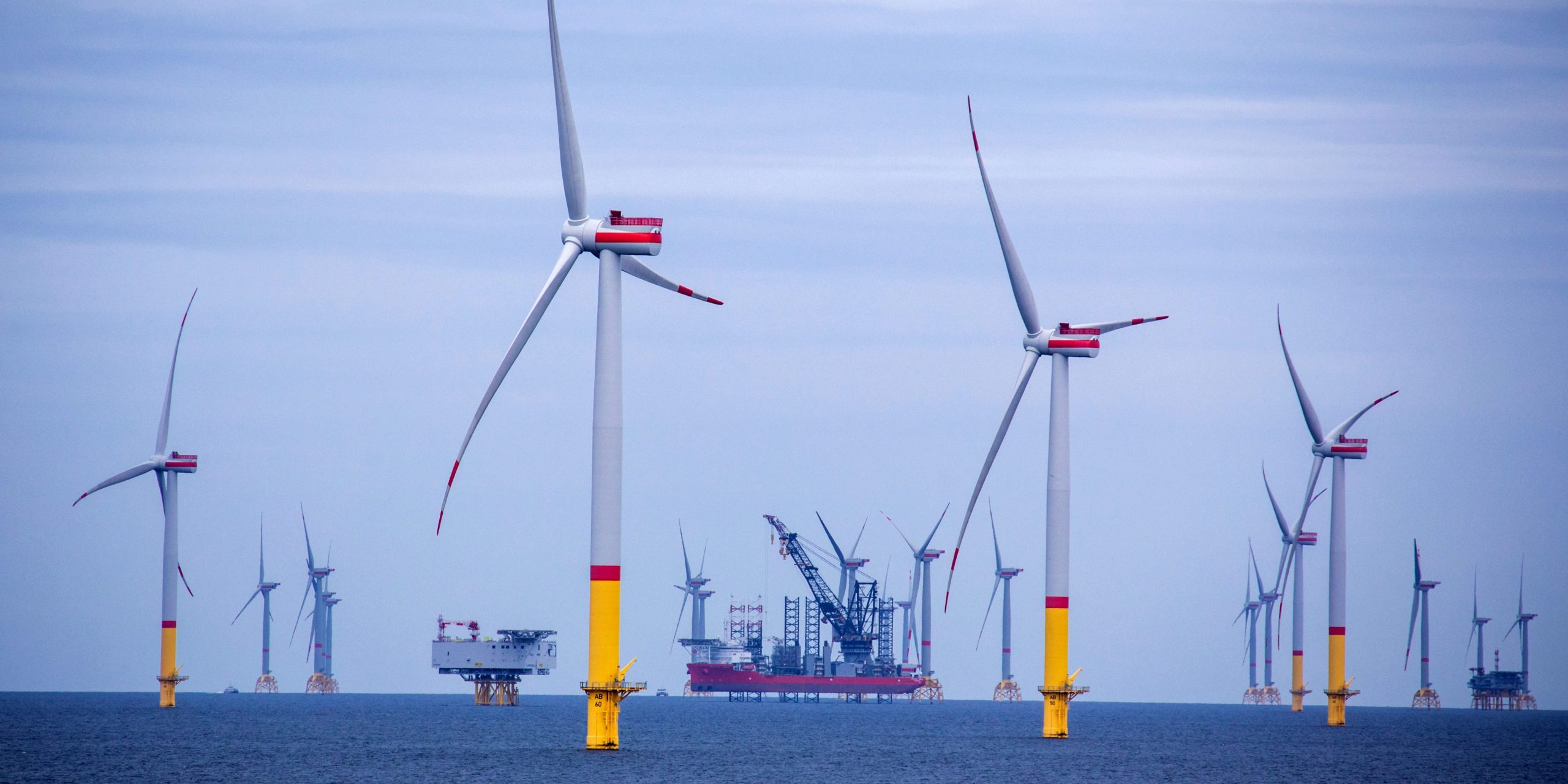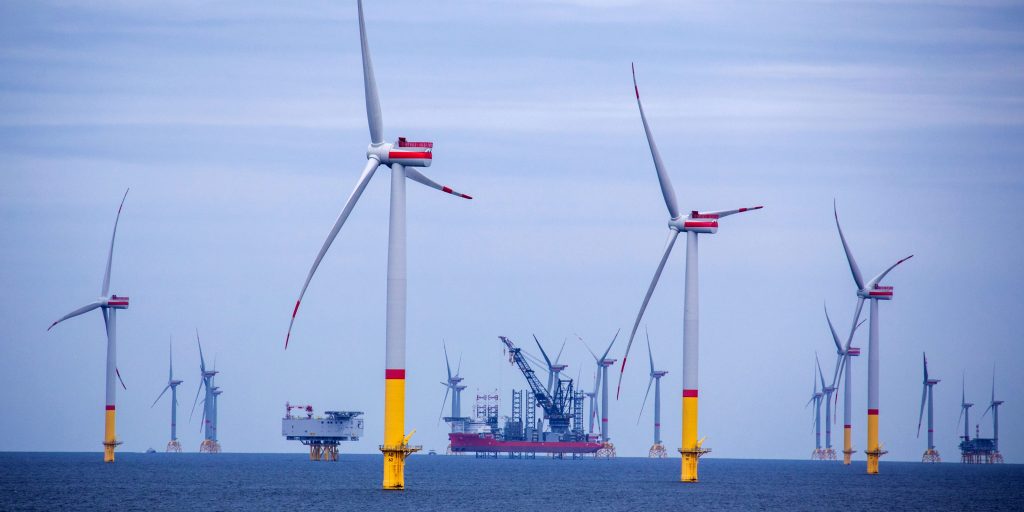
Jens Büttner/Picture Alliance via Getty Images
- Renewable energy capacity increased by 45% in 2020 the International Energy Agency said.
- The IEA predicts that renewable energy sources will cover 90% of global power expansion in the next two years.
- Demand for renewable energy increased during the pandemic, whilst use of other energy sources declined.
- Sign up here for our daily newsletter, 10 Things Before the Opening Bell.
Renewable energy sources increased by 45% in 2020, accelerating at their fastest rate since 1999, as demand for clean power grew during the COVID-19 pandemic, the International Energy Agency said in a report on Tuesday. Wind energy led the expansion, as global capacity increased by 90%. Solar energy capacity grew by 23%.
The IEA links this increase in renewable energy capabilities to global policy decisions and deadlines that countries had set themselves in terms of expanding their renewables sectors. China, the US and Vietnam are credited with leading the renewables push after momentum slowed when the pandemic first hit.
"Overall, IEA quarterly deployment estimates indicate that the slowdown in renewable capacity additions was limited to Q1 2020 only, mainly in China, while construction activity continued strongly in the rest of the world despite continuous movement restrictions and supply chain delays," the agency said in the report.
Energy markets were hit hard during the COVID-19 pandemic, which saw travel come to a halt, as lockdown restrictions forced people to stay at home. Oil prices fell and turned negative for the first time in early 2020, as demand for the fuel vanished. Crude has since recovered, as investors anticipate economies reopening.
The decline in fossil fuel use also affected biofuel demand, the IEA said. Production fell by 8% in 2020, but still exceeded expectations – 150 billion liters of biofuel were needed in 2020 vs the 144 billion the IEA had predicted. The agency expects demand to rebound in 2021 and grow by a further 7% in 2022.
Looking ahead, the IEA predicts renewable energy sources will be responsible for 90% of global power expansion in 2021 and 2022. The agency expects solar and hydrogen power to play key roles, while the growth of wind power is set to slow down after its surge in 2020.
"The acceleration of hydropower additions through 2022 is driven by the commissioning of mega-scale projects in China. Meanwhile, expansion in other renewables, led by bioenergy, remains stable and represents 3% of total new renewable capacity additions," the IEA said.
China had already been the driving force of renewable energy expansion in 2020, accounting for half of the new capacity installations and is expected to keep this leadership position, the IEA said.
Despite President Joe Biden's recent infrastructure plans, Europe is set to replace the US as the second-largest renewable market in 2021 thanks to national policies on climate change and deadlines that are looming. Biden's infrastructure spending may not take effect until later this decade, the IEA said.
